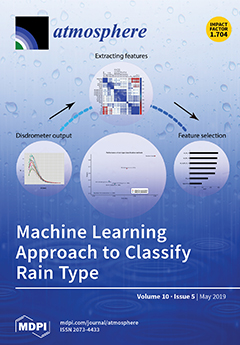Open AccessArticle
In-Home Emissions Performance of Cookstoves in Asia and Africa
by
Michael A. Johnson, Charity R. Garland, Kirstie Jagoe, Rufus Edwards, Joseph Ndemere, Cheryl Weyant, Ashwin Patel, Jacob Kithinji, Emmy Wasirwa, Tuan Nguyen, Do Duc Khoi, Ethan Kay, Peter Scott, Raphael Nguyen, Mahesh Yagnaraman, John Mitchell, Elisa Derby, Ranyee A. Chiang and David Pennise
Cited by 26 | Viewed by 4876
Abstract
This paper presents results from eight field studies in Asia and Africa on the emissions performance of 16 stove/fuel combinations measured during normal cooking events in homes. Characterizing real-world emissions performance is important for understanding the climate and health implications of technologies being
[...] Read more.
This paper presents results from eight field studies in Asia and Africa on the emissions performance of 16 stove/fuel combinations measured during normal cooking events in homes. Characterizing real-world emissions performance is important for understanding the climate and health implications of technologies being promoted as alternatives to displace baseline cooking stoves and fuels. Almost all of the stove interventions were measured to have substantial reductions in PM
2.5 and CO emissions compared to their respective baseline technologies (reductions of 24–87% and 25–80%, for PM
2.5 and CO emission rates, respectively), though comparison with performance guidance from the World Health Organization (WHO) and the International Organization for Standardization (ISO) suggests that further improvement for biomass stoves would help realize more health benefits. The emissions of LPG stoves were generally below the WHO interim PM
2.5 emissions target (1.75 mg/min) though it was not clear how close they were to the most aspirational ISO (0.2 mg/min) or WHO (0.23 mg/min) targets as our limit of detection was 1.1 mg/min. Elemental and organic carbon emission factors and elemental-to-total carbon ratios (medians ranging from 0.11 to 0.42) were in line with previously reported field-based estimates for similar stove/fuel combinations. Two of the better performing forced draft stoves used with pellets—the Oorja (median ET/TC = 0.12) and Eco-Chula (median ET/TC = 0.42)—were at opposite ends of the range, indicating that important differences in combustion conditions can arise even between similar stove/fuel combinations. Field-based tests of stove performance also provide important feedback for laboratory test protocols. Comparison of these results to previously published water boiling test data from the laboratory reinforce the trend that stove performance is generally better during controlled laboratory conditions, with modified combustion efficiency (MCE) being consistently lower in the field for respective stove/fuel categories. New testing approaches, which operate stoves through a broader range of conditions, indicate potential for better MCE agreement than previous versions of water boiling tests. This improved agreement suggests that stove performance estimates from a new ISO laboratory testing protocol, including testing stoves across low, medium, and high firepower, may provide more representative estimates of real-world performance than previously used tests. More representative results from standardized laboratory testing should help push stove designs toward better real-world performance as well as provide a better indication of how the tested technologies will perform for the user.
Full article
►▼
Show Figures





